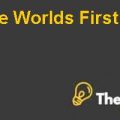Introduction & Background
Use of ink for coloration, for writing, and for the creation of images is a long history. The oldest paintings can be traced back to almost 40,000 years ago, done in a cave in the north of Spain and in Indonesia. Moving forward to almost eight to ten thousand years, the first natural world portrait can be traced. In this era, blood of animals, plant sap, and manganese dyes were used to create ink. Since that time, the creation of ink has taken on many different methods and materials and has changed drastically.
For almost 35,000 years, the ink was created only for artistic use. It wasn’t until 3200 BCE until writing emerged as well. For writing purposes, the material used for the creation of ink included carbon, vegetable oil, and tar.
Till now, there have been numerous components that have been used for ink creation. These include inorganic pigments such as cadmium red and chrome yellow and organic pigments like carbon black. Other pigments include the likes of metallic pigments and miscellaneous inorganic pigments. (WORLD, 2003)
Air-Ink came into existence from the idea of converting something harmful into useful, i.e. air pollution into ink. The company has become apioneer in terms of developing ink from air-pollution. Air-Ink has invented in a machine that captures air pollution. This pollution is then turned into a high quality ink. It is made of particulate matter present in the pollution, i.e. unburned carbon soot. The matter usually comes from chimneys, pollution caused by transport, and generators.
AIR-INK Harvard Case Solution & Analysis
Air-Ink is based in Singapore and one of the goals of the company is to encourage the customers to buy their ink so that air pollution can be decreased simultaneously. Currently, Air-Ink is offering screen printing ink and water resistant markers to its customers. (kickstarter, 2018)
Strategic Analysis
Macro Marketing Environment
To analyze the macro environment for Air-Ink, we have conducted the PEST analysis. This analysis would help us to identify different political, economic, social, and technological factors that can have an impact on the company.
PEST Analysis
Political
- Australia has stable political environment. That allows it to attract majority of the businesses.
- It is also considered as one of the least corrupted countries.
- The business framework and the legal framework, both are supported by the educated work force in Australia.
- The governmentgreatlyregulatesthe businesses andcontrols over the harmfulpractices of the business that may hurtthe environment and eco-stability.
All these mentioned factors contribute to a thriving business.
Economic
- The Gross Domestic Product (GDP) of Australia has increased in recent years with a good rate. The country also reached its highest ever GDP is the recent years.
- Australia is a highly developed country and it has a free-market economy which is also very successful.
- The per capita GDP of the country is even higher than that of some of the developed nations.
All these factors show that the people of Australia are vibrant when it comes to consumption and a growing economy would highly favor the growth of the company as well...............
This is just a sample partical work. Please place the order on the website to get your own originally done case solution.













